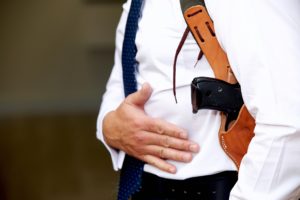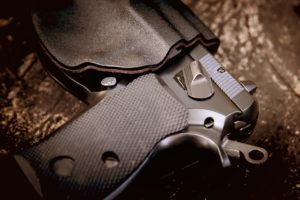 Today we’re sharing minimum EDC (minimum everyday carry) best practices for carrying on your body in your daily activities. You’ll see the state your gun must be in, along with what you need on you with your carry gun. This includes non-gun tools, defensive items and more.
Today we’re sharing minimum EDC (minimum everyday carry) best practices for carrying on your body in your daily activities. You’ll see the state your gun must be in, along with what you need on you with your carry gun. This includes non-gun tools, defensive items and more.
You’ll uncover the most powerful deterrent besides a gun. You’ll also learn when to carry spare ammo, how to prepare for a possible firearm malfunction, along with which items have higher priority for carrying on your body.
Learn how to be prepared and stay safe.
 How would you apply these tips the next time you leave you home? Do you follow these minimum EDC guidelines, or do you just carry what you want? Share your thoughts about how you approach minimum EDC below.
How would you apply these tips the next time you leave you home? Do you follow these minimum EDC guidelines, or do you just carry what you want? Share your thoughts about how you approach minimum EDC below.
Adam Painchaud is one of the most highly regarded small unit tactics and advanced firearms instructors in America. He is Army Ranger and Airborne qualified. Adam, a senior non-commissioned officer, has nearly 22 years of experience in both active duty and reserves. He has completed federal investigations as well as protective services missions worldwide including missions for the war against terrorism.
Adam has since transitioned to being the President and Co-Founder of E3 Firearms Association, as he continues to serve as a police officer. Adam remains active helping with training agencies, SWAT teams, and the community. He is dedicated to making a positive difference in the firearms community and in people’s lives. Adam is the driving force behind E3 Firearms Association.
